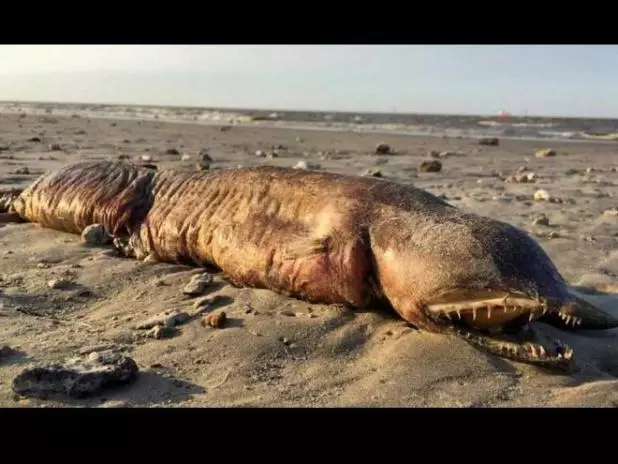
((The fossilised bones of the long-necked marine reptile, named Arminisaurus schuberti, were excavated in the early 1980s in Germany. Image Courtesy: Twitter))
A new species of 190 million-year- old giant sea monster has been identified by scientists, that may shed light on the evolution of 'super predators' in the Jurassic period.
The fossilised bones of the long-necked marine reptile, named Arminisaurus schuberti, were excavated in the early 1980s in Germany.
"Plesiosaurs were amongst the most successful marine predators from the Age of Dinosaurs. Some, such as the famous Liopleurodon, were colossal predators up to 15 metres long," said Sven Sachs, a researcher at the Naturkunde-Museum Bielefeld in Germany.
"They were the equivalent of White sharks and Killer whales in the oceans today," Sachs added.
By comparison, Arminisaurus was small, only about 3-4 metres long, and probably hunted fish, squid and other small prey in the ancient seas that covered Germany during the Jurassic period, researchers said.
The preserved bones of Arminisaurus were broken up by mining machinery, but enough was recovered to classify the animal as an early relative of later Jurassic plesiosaur super predators known as pliosaurids.
About 40 per cent of the skeleton was recovered, including parts of the skull, vertebrae and limb bones, researchers said.
"Arminisaurus is significant because it dates from a time frame early in the Jurassic, during which we have very few identifiable plesiosaur fossils," said Benjamin Kear, Curator at Uppsala University in Sweden.
"Only two other plesiosaur fossils have ever been named from this mysterious interval in plesiosaurian evolution, making Arminisaurus a very important new addition for the global record of the group," Kear said.
The study also showed that Arminisaurus shared features with plesiosaurs that lived 50 million years later, during the Cretaceous period.
This information will help unravel the radiation of these bizarre marine reptiles, and shed light on the early diversity of the gigantic pliosaurids.
The findings appear in the journal Alcheringa.
Hi! I am a robot. I just upvoted you! I found similar content that readers might be interested in:
http://www.ndtv.com/world-news/190-million-year-old-long-necked-sea-monster-identified-in-germany-1751806
Downvoting a post can decrease pending rewards and make it less visible. Common reasons:
Submit
This post recieved an upvote from minnowpond. If you would like to recieve upvotes from minnowpond on all your posts, simply FOLLOW @minnowpond
Downvoting a post can decrease pending rewards and make it less visible. Common reasons:
Submit
Congratulations @koushikcsc2! You received a personal award!
You can view your badges on your Steem Board and compare to others on the Steem Ranking
Vote for @Steemitboard as a witness to get one more award and increased upvotes!
Downvoting a post can decrease pending rewards and make it less visible. Common reasons:
Submit